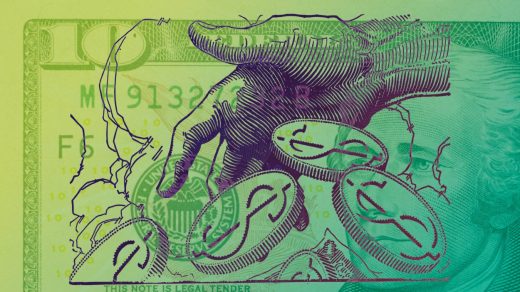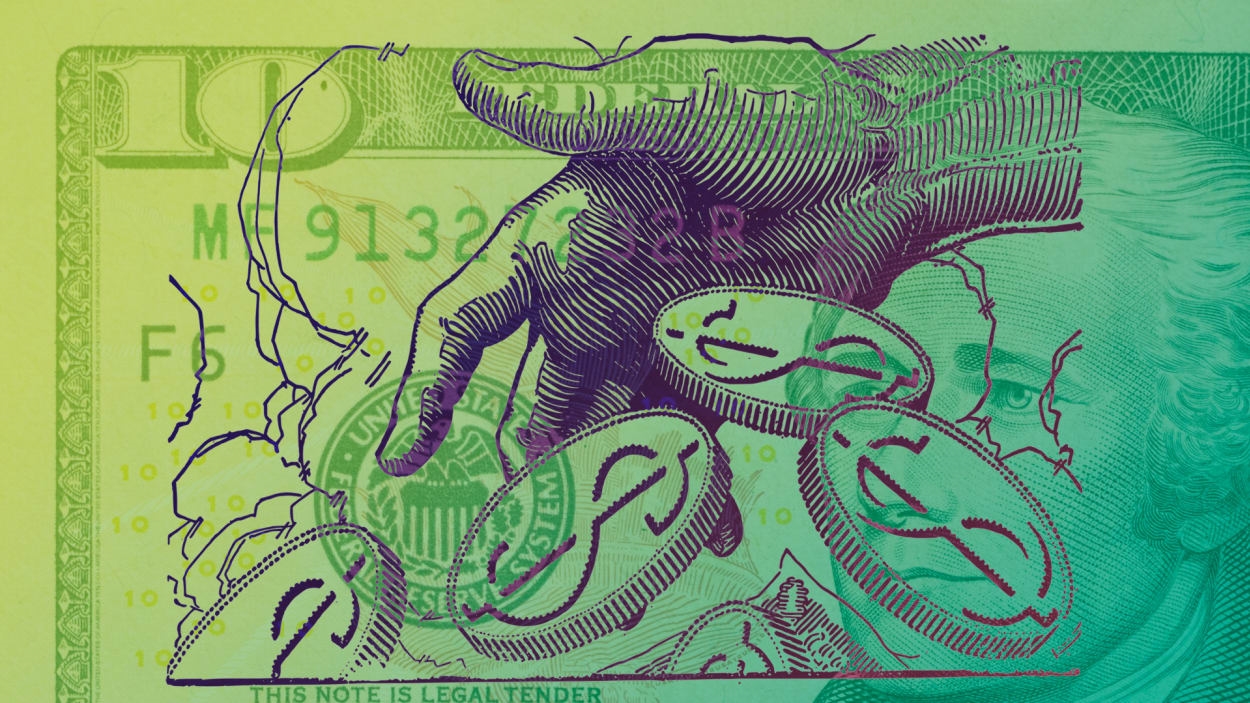Money isn’t real
By Emily Guy Birken
When you think about it, the entire concept of money is pretty bizarre.
Governments produce paper bills and metal disks adorned with pictures of deceased leaders—and their citizens center their lives around the getting, keeping, and using of these objects.
What’s more, the paper and metal objects themselves are not even necessary these days, as our money is more likely to be numbers on a screen that we spend by clicking buttons or tapping cards.
It’s almost like the whole system is made up.
Of course, just because the financial system is a human invention doesn’t mean money doesn’t occupy a very real place in our lives. Anyone who has ever lost sleep when rent was due can attest to the “realness” of money stress. But acknowledging the fact that money is a construct can help us think more rationally about our finances.
Here’s how to navigate the unreal reality of money so you can make the best possible decisions with your finances and your life.
Collective Psychosis
Jason Vitug, financial wellness expert and best-selling author of Happy Money, Happy Life, wryly describes money as “a collective psychosis we all share.” But Vitug is quick to follow this up by explaining that “money is real as a form of exchange.”
This is the kind of basic economics that you probably learned in high school social studies. Widely accepted currency is an elegant solution to the inefficiencies of bartering. The problem is that both society and individuals lose sight of what money truly is.
“Money is storage,” Vitug says. “It is not an object in itself. It has a use and it needs to flow, which is something that people often forget.”
In other words, money only has value and power because it can be exchanged. But both individually and collectively, we tend to think the money itself has value and power—which leads us to make some seriously disordered decisions about money.
Money and Mood
Since money does not technically exist, we put our own emotional meaning on it. Whether you are letting the fluctuations of your investments dictate your daily mood, chasing the high of hitting the jackpot on a one-armed bandit, or avoiding any purchases for fear of running out, you are having an emotional response to your finances. That’s because money is emotional, even if we rarely think of it that way.
Here’s the good news: We know how to improve our emotional state. “Move to change your mood,” Vitug says. “There is a meditative aspect of physical activity, and movement alters our mood immediately in the moment.”
Scientific studies have proven the link between exercise and mood, which gives us a clear playbook for how to make good decisions when feeling financially overwhelmed. Vitug recommends anything from going for a walk to doing a couple of yoga poses to simply standing up for a few moments when you become emotionally dysregulated.
Getting your body moving can help you emotionally contextualize your financial stress, instead of letting yourself spiral. Once you have done that, you are in a better position to tackle the problem you want money to solve.
Know the Problem
“Money can solve money problems,” Vitug says. “It can’t solve life problems.”
Unfortunately, people often try to solve life problems with money. Remembering that money is storage can help us better recognize when we are trying to use it to solve a life problem.
For example, a devoted parent may believe working overtime is the best way to show their love. The extra hours lead to fatter paychecks that the parent spends on the family. But children almost universally prefer their parents’ presence to their presents. By working overtime, this parent is trying to solve a life problem—how to show love and devotion for the family—with a money solution.
When you are feeling dissatisfied about your finances, it can be helpful to ask yourself what problem you are trying to solve with money. It may be that you have a money problem that money will solve. But you may be trying to use money as a solution to a life problem, in which case, money will not fix anything.
To help you figure out if you’re trying to solve a money problem or a life problem, ask yourself this question: “What would a sudden infusion of cash change about this situation?” For instance, the workaholic dad might recognize that buying a new bike for his child will not fix their relationship—especially if the kid is sad because Dad was a no-show at the school play.
Intentionality and Reality
“Working on the bigger picture of the life you want to live can help you let go of thinking of money as an object,” Vitug says.
An intentional vision of your life gives you a destination to work toward. When you see money as a component of the specific goals you want to accomplish, “money loses its ‘thingness,’” Vitug explains.
And when we stop viewing money as a “thing” to get, keep, or spend, and instead recognize it as the tool it is, we are freer to make the choices that align with the life we want.
Emily Guy Birken is a Milwaukee-based personal finance writer. Her books include The 5 Years Before You Retire, Choose Your Retirement, Making Social Security Work for You, and End Financial Stress Now.
(43)



